Molecular sieving made efficient with smart valve selection
The chemical and hydrocarbon processing industries are constantly looking for ways to improve the efficiency, economics and safety of processes like gas and liquid separation. The critical role of automation, including switching valve selection, in the successful and sustainable molecular sieve adsorption process cannot be underestimated.
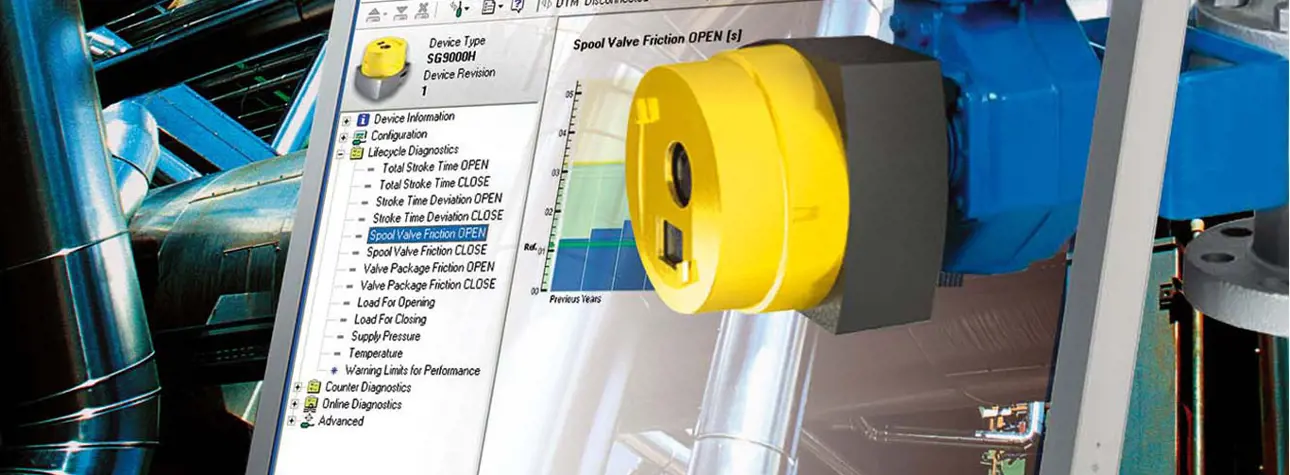
The chemical and hydrocarbon processing industries are constantly looking for ways to improve the efficiency, economics and safety of processes like gas and liquid separation. The impact of such processes on our global environment should not be underestimated. Adsorption and molecular sieve technologies have already been widely used throughout industry for decades to separate hydrocarbons and dry gases and to remove impurities. Many types of adsorbents exist, of which the most important are activated alumina, zeolite, silica gel and activated carbon. The focus is typically at the heart of the process – choosing the most suitable adsorbent to optimize the drying or purification process in question. But what about the role of automation, including switching valve selection, for the successful and sustainable molecular sieve adsorption process?
Valmet Flow Control business line (former Neles) has applied flow control solutions to adsorptive processes, such as molecular sieving, for decades from bioethanol to refinery isomerization, cracked gas dryers and LNG dryers. Valve selection depends on the actual application and specific requirements. There are however a lot of similar challenges to be found in molecular sieve valve applications, and this aspect put automation companies, like Neles, in an interesting position as a link between different industries with a wide-range product offering and profound application knowledge and experience.
- Highlights
- Activated alumina, zeolite, silica gel and activated carbon are among the most important types of existing adsorbents.
- Neles has applied flow control solutions to adsorptive processes for decades from bioethanol to refinery isomerization, cracked gas dryers and LNG dryers.
- The valves have to withstand considerable fluctuations in temperature together with high pressure, while keeping the tightness in both flow directions over years of operation.
- Care must be taken in valve material selection and seat construction to avoid any wear or particles entering the seat cavities.
- By replacing rising-stem type valves with rotary ball valves, numerous plants improved their operations, eliminating production losses and reducing maintenance costs.
What is molecular sieving?
A typical system consists of two or more columns packed with molecular sieves, which are zeolite-based adsorbents consisting of crystalline aluminosilicates (zeolites) and clay. The special characteristics of molecular sieves include reversible adsorption of various gaseous compounds and a network of cavities and narrow pores, offering a very high internal surface area. As the wet or sour stream is processed in one column, the other is regenerating. Depending on the volumes being treated, a multi-adsorber system can be implemented. Prior to entering the column for the adsorption phase, water and other contaminants are removed in a coalescer or separator. The molecular sieve adsorbs the impurities in a down-flow direction. Zeolites retain their drying efficiency up to 100 °C. When the molecular sieve bed approaches its maximum saturation, the inlet stream is switched to the second column, and regeneration is started in the first column. Molecular sieves can be regenerated by heating the adsorbent with a hot gas, steam or by changing the partial pressure (pressure swing). Regeneration gas flows counter-currently to the process gas at temperatures between 200 and 320 °C. Counter-current regeneration is used to prevent the aging of the adsorbent and therefore enhances the number of cycles.
Regeneration is followed by cooling with dry gas in the same direction as the adsorption that will flow to the regeneration gas separator to remove condensed water. Gas exiting the regeneration gas separator is recycled back to the inlet of the adsorption column through a gas compressor.
Challenges facing valves in molecular sieving
What are the usual requirements for valves in molecular sieving? The switching valves in molecular sieving play an important role in directing the inlet/outlet stream of gas between the columns, hence switching the columns from an adsorption phase into the regeneration and cooling phase in a preset sequence. Each of the columns has several switching valves. These valves are sometimes called sequencing valves. Cycling frequency may vary depending on the molecular sieve system; in hydrocarbon processing, these valves cycle typically three to four times every day. Changing temperatures from 25 °C to 400 °C and operating temperatures of up to 100 barg are typical in hydrocarbon processing, for example large molecular sieve dryers in LNG trains. The valves have to withstand these fluctuations in temperature together with high pressure while keeping the tightness in both flow directions over years of operation. Additionally, because the molecular sieve beds tend to release dust during the regeneration cycle, care must be taken in material selection and seat construction in order to avoid any wear or particles entering the seat cavities and adhering to sealing surfaces. The operational speed requirements, typically ranging from 10 seconds to a few minutes, are not demanding for valves. Different stroking profiles however, are often required for opening and closing: for example slow opening (2 minutes) and fast closing (15 seconds). In the event of failure, the valves are required to close or stay put. Fugitive emission control is very important in hydrocarbon processing to avoid hazards to the environment and to health; therefore the valve packing should maintain tightness over the whole process run-period.
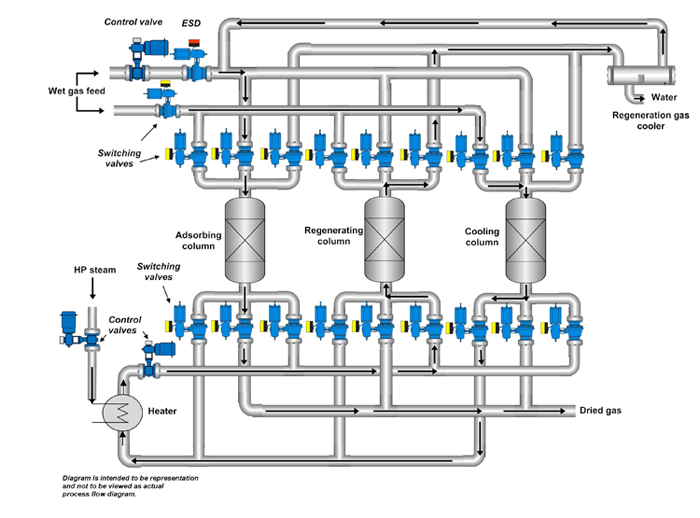
How to choose the right valve?
Metal-seated valves, like ball and butterfly valves, have been widely used for these kinds of demanding switching applications. For the most demanding applications, trunnion-mounted ball valves are selected for their reliable operation and excellent response with high-pressure differentials. Trunnion-mounted designs give lower friction and operating torque. Seat construction ensures durable tightness in both directions, even in extreme conditions. This design has proved its long-lasting tightness over years of frequent switching with molecular sieve dust present and constant temperature changes.
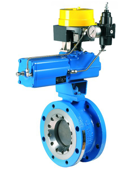
Special hard coatings, such as carbides, are commonly used in this type of application. For smaller sizes and lower pressure differentials, seat-supported ball valves have been used for floating ball designs that ensure long-lasting tightness with metal seats and low shut-off pressures. Triple eccentric disc valves provide an interesting option in large size applications for switching molecular sieves, where pressures remain at a moderate level.
Neles™ triple eccentric disc valve.
Neles™ trunnion-mounted ball valve.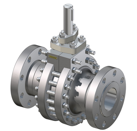
The triple offset metal-seat design is well suited to this frequent cycling at high temperature and to abrasive applications because it can withstand long periods of operation without losing bi-directional tightness, even in large thermal cycling applications. Long-lasting tightness is ensured by mechanically induced disc and seat contact, which does not rely on differential pressure and a rugged one-piece seat design. Piston-type double-acting and springreturn actuators are used to ensure the valves’ capability to withstand frequent cycling and to ensure long cycle life. The torque characteristic is optimized for both ball and butterfly valve types in critical switching service to overcome valve static friction and dynamic torque (running torque). High quality bearings and sealing are used to optimize torque output for minimum internal friction. Cycle life for these types of actuator has been tested to last up to 2 million cycles.
Intelligence – the icing on the cake
After careful selection and sizing of the valve, actuator and instrumentation, is there any way to see how the valve is performing in this critical application? Is it possible to predict and plan the maintenance activities? The answer is clearly “yes”. Choose an intelligent controller mounted on top of the valve. Intelligent digital controllers, such as Neles SwitchGuard, take the start-up, operation and maintenance planning for molecular sieve switching applications to a whole new level. Most importantly, it is possible to see, during the course of the process, what is going on in the automated switching valves in the molecular sieve, often critical for the whole plant’s availability, for example in LNG liquefaction or refinery isomerization.
“Single-source responsibility of all components manufactured, fully tested and configured will ensure the proper performance of molecular sieve valves throughout the whole life cycle.”
Typically, switching valve instrumentation involves many components and their failure can have adverse effects on process control. In the worst case, component failure can cause unscheduled process shutdowns. These failures can be reduced by using compact intelligent controllers with integral limit switches and large pneumatic capacity, and eliminate the need for additional instrumentation. By analyzing the operation of molecular sieve valves while they are operating, storing the diagnostic information within the device and using asset management solutions, such as Neles FieldCare, this information can be used to plan maintenance programs and to ensure the availability of switching valves and the molecular sieving process. Additionally, intelligent controllers can be used to set up valve opening and closing with various stroking profiles without additional accessories. For example, if valve opening should take place within 10 seconds, with the first phase being slow and then (after flow starts through the valve) the rest of the opening phase being quicker, this is possible. This kind of feature is a useful and interesting option for use in molecular sieves, where care should be taken in minimizing pressure and temperature shocks to the adsorbent beds while changing between adsorption and desorption.
Conclusion
The importance of the careful selection of valves for molecular sieving processes can never be overemphasized. There have been cases, where valves – such as rising-stem ball valves – have caused unacceptably high annual costs for years in such applications, where processing plants suffered from product losses over years, far exceeding the purchase price of the sequencing valves. Plants have successfully replaced rising-stem type valves with rotary ball valves in molecular sieving and were able to improve the situation remarkably, eliminating such production losses and reducing maintenance costs. Singlesource responsibility of all components manufactured, fully tested and configured will ensure the proper performance of molecular sieve valves throughout the whole life cycle. An intelligent valve controller provides the means for simple and reliable instrumentation with transparency to switching valves’ performance while the process is running. Reliable molecular-sieve switching valves will support the use and development of more economical and cleaner processes and fuels, such as isomerization, LNG and bio-ethanol, where molecular sieve adsorption plays an important role in total process availability and successful production.
Text: Sari Aronen
This article has been published in Hydrocarbon Engineering, October 2011 issue as ‘Sieving savings’.
Text originally published in 2011, and slightly updated in April 2022, due to the company name change to Valmet.
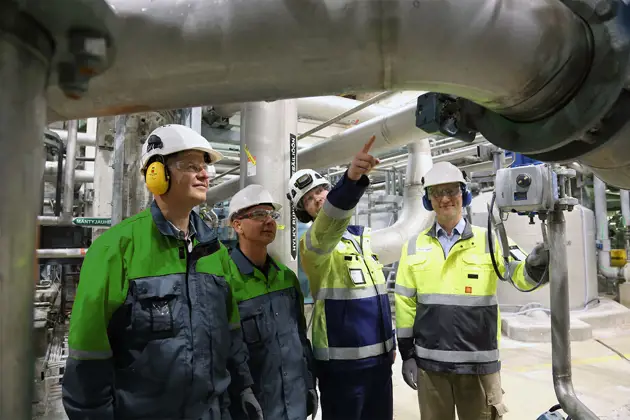
Subscribe to our newsletter
Subscribe now to flow control newsletter and receive the latest insights directly to your email.
SubscribeRead more about molecular sieving

